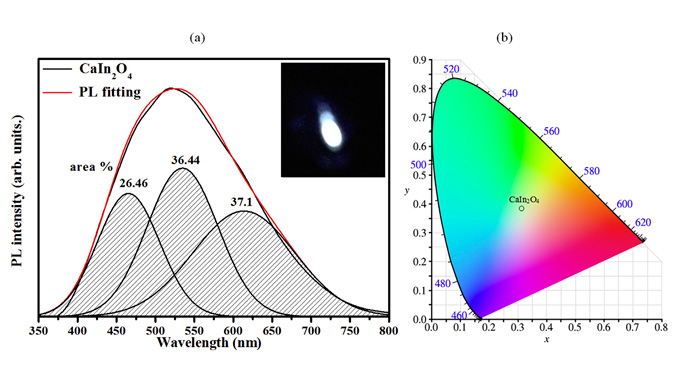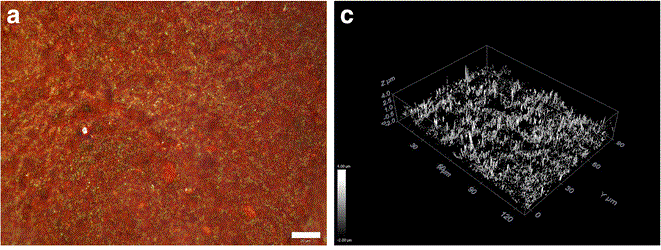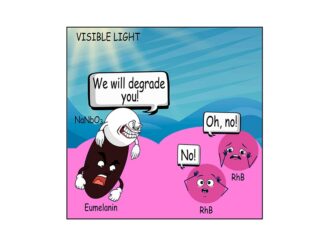
Writers: M.T.S. Tavares and M.M. Melo and V.D. Araújo and R.L. Tranquilin and C.R.R. Almeida and C.A. Paskocimas and M.R.D. Bomio and E. Longo and F.V. Motta
Keywords: CaIn2O4; Ultrasonic spray pyrolysis; Nanocrystals; Photocatalysis; Photoluminescence; White-light
Abstract: CaIn2O4 (CIO) nanocrystals (NCs) were prepared by ultrasonic spray pyrolysis at 1223 K without the use of surfactants to investigate the influences of the nanostructure on the photoluminescence and photocatalytic properties of this white-light emitter. The optical properties were analyzed by ultraviolet–visible (UV–vis) absorption spectroscopy, which indicated a band gap energy of 3.83 eV, and photoluminescence (PL) measurements at room temperature that showed a broad and intense emission band. X-ray diffraction (XRD) analysis confirmed that the CIO NCs adopted the orthorhombic crystalline phase. Field-emission gun scanning electron microscopy (FEG-SEM) micrographs demonstrated the spherical morphology of the CIO NCs, comprising aggregates of several CIO NCs. Furthermore, the as-synthesized CIO NCs exhibited enhanced activity for the photodegradation of methylene blue (MB) under UV–vis irradiation. The chromaticity coordinates were calculated for the sample based on the PL spectrum; the CIO NCs had values of x = 0.31 and y = 0.38, and this point is located on the white region of the CIE diagram. Ultrasonic spray pyrolysis provides a feasible approach for preparing shape- and size-controlled CIO nanocrystals that hold great potential for photocatalytic applications and as photoluminescent white emitters.




